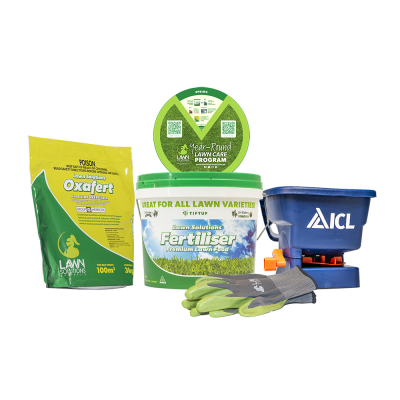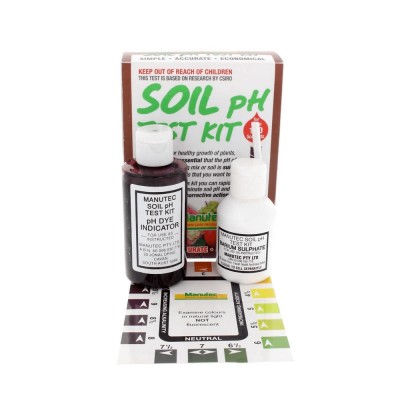Did you know that there is such a thing as giving your lawn a little too much love? We take a look at how lawn care products affect your lawn and how to avoid burning your lawn.
Skip to: How to avoid burning my lawn with fertiliser? How to avoid burning my lawn when using herbicides? How to use non selective herbicides? How do I help my lawn recover after burning it?
How to Avoid Burning My Lawn with Fertiliser
Fertilisers are one of the main culprits of burns on your lawn. When using fertilisers, it is always best to follow all application instructions and apply the correct amount of product to your area size.
Granular fertilisers often need to be applied to a dry lawn and then watered in so that the granule is washed into the lawn’s profile. When using granular fertilisers, apply the granules to the area evenly. Using a fertiliser spreader will assist with this.
When using liquid fertilisers, the main cause of burning can be overapplying products to your area. Ensure you know how big your lawn area is and measure how much product is required for your space. When using a hose on product, check the area size it covers and apply it to the whole space.

How Can I Avoid Burning My Lawn When Using Herbicides?
When using herbicides on your lawn, there are a few steps you can take to avoid burning from occurring. Before purchasing a product, check the label to ensure it is safe for your lawn type. Some herbicides are not safe for all lawns.
Another common cause of burns is applying too much product, this can be done in multiple ways. Before application, make sure you know the area size you want to treat and mix your herbicide accordingly. If using a hose on product, ensure you apply it across the whole lawn and not just concentrated to where the weed is growing, as this can cause burns to the grass underneath.

How to Use Non-Selective Herbicides
As the name suggests, non-selective herbicides like Roundup and Zero with the active ingredient Glyphosate will target all plant material that they touch, including your lawn. This means when using them, you will need to be very careful where you spray and even when walking over sprayed areas.
These herbicides are best used to completely remove all plant material in areas where you are looking to completely renovate or treat weeds in paved or concrete areas. However, if there is a weed growing in your lawn and no selective herbicide is available for its removal, you may have to use a non-selective herbicide. When this is the case, the best application method is to carefully apply the non-selective herbicide with a weed wand or small paint brush for an accurate application.
When non-selective herbicides are not carefully applied, they can also kill off the surrounding grass.

How Do I Help My Lawn Recover from a Burn?
If your lawn has become burnt, there are a few things you can do to help it recover.
What should I do if a burn has just occurred on my lawn?
If a burn has just occurred, the most important thing to do is water the lawn well. This will help wash away excess product and encourage new growth. Following this, keep up with regular mowing to stimulate new growth.

What should I do if I have killed a patch of grass?
The first thing to consider is the size of the area. If the patch is smaller than an A4-size piece of paper, the surrounding grass should be able to grow and spread back over it. If the area is larger than this, you may need to use a turf roll to patch up the lawn for a faster recovery. Please check out our Repairing Bare Patches blog for more information here.
For more lawn care tips and advice, make sure you check out our other lawn care blogs here.


